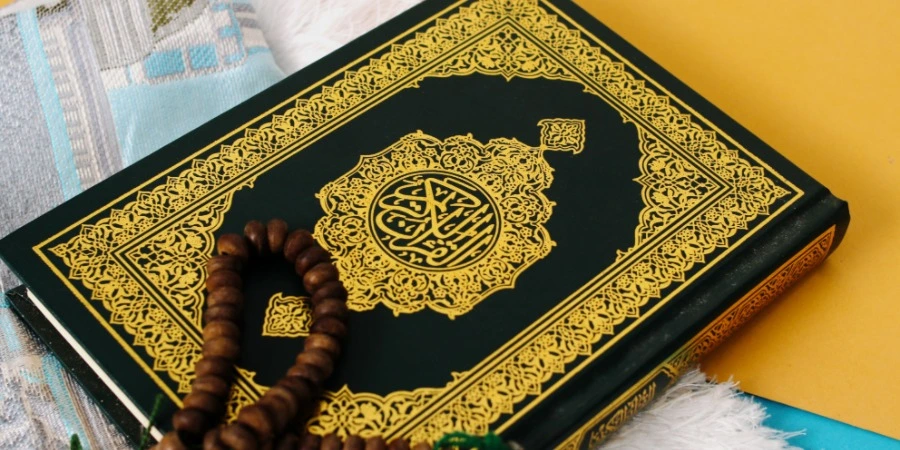Qirā’at (recitations) are the different, approved ways the Qur’ān has been recited across generations. These variations involve differences in pronunciation, elongation, sometimes subtle shifts in words, but never changes in foundational meaning.
Qirā’at carry deep significance in Islam because they reflect the mercy and flexibility built into the revelation. So that different dialects and phonetic ease could be honored.
While many use one Quran recitation (like Hafs ‘an ʿĀṣim) widely, advanced learners often explore others to grow spiritually, sharpen linguistic ability, and connect with diverse Muslim traditions. In this guide, I’ll walk you through seven canonical Qirā’at, explain how they differ, and show you how you can begin learning them step by step.
What are the 7 Types of Qira’at?
The seven canonical Qirā’at trace back to the authority of Ibn Mujāhid who, in the 4th century AH (10th CE), formally recognized and limited recitations to seven that met strict criteria.
Each qirā’a is named after a master reciter (qāriʾ), and has two primary transmitters (riwāyāt) and multiple lines (turūq).
The seven are:
- Nafiʿ al-Madani
- Ibn Kathīr al-Makkī
- Abū ‘Amr al-Basrī
- Ibn ʿĀmir ad-Dimashqī
- ʿĀṣim al-Kūfī
- Ḥamzah al-Kūfī
- al-Kisā’ī
Each has its own phonetic/norm rules. Some merge certain sounds, others emphasize extensions (madd), or treat silent letters (sukūn) differently.
Historically, communities in Kufa, Basra, Damascus, Medina, and Mecca favored particular recitations. Today, for instance, Warsh (a riwāyah of Nafiʿ) thrives in North Africa, while Hafs (a riwāyah of ʿĀṣim) dominates in much of the Muslim world.
Searching for the Online Quran Courses?
Join our online Quran classes led by certified and experienced tutors from the comfort of your home.
Book Your Free Trial1. Qira’at of Nafi‘ al-Madani
Nafiʿ al-Madani (from Madinah) is one of the foundational reciters. His method has deeply influenced early Islam. His recitation emphasizes clarity, measured elongations, and graceful transitions.
Through his famous transmitters Warsh and Qālūn, his style became prominent in North and West Africa (Warsh) and parts of Libya and Tunisia (Qālūn).
Unique traits: certain letters are elongated differently; in some verses, a vowel is inserted or omitted in ways other recitations do not allow. Scholars like Ibn al-Jazari and Shāṭibī included Nafiʿ’s method in their compendia.
When learning, many start with verses that differ between Hafs and Warsh to train the ear.
2. Qira’at of Ibn Kathīr al-Makki
Ibn Kathīr al-Makki (from Mecca) presents a style that blends the Meccan dialect and poetic fluency. His transmission emphasizes certain vowel treatments and specific stops (waqf) that differ from Nafiʿ or ʿĀṣim.
His riwāyāt (transmitters) include al-Bazzi and Qunbul. Historically, this style was respected in the Hijaz region, connecting reciters in Mecca and Medina.
Learners of Ibn Kathīr’s recitation often focus first on verses with variant verb endings or pronoun shifts. Online courses sometimes offer “Ibn Kathīr specialization” modules to train these distinctions.
3. Qira’at of Abu ‘Amr al-Basri
Abū ‘Amr al-Basrī (Basra) is well-known for his balance between precision and fluency. His recitation has subtle articulation of certain consonants, nuanced elongations, and attention to weak letters (like alif and ya combinations).
His leading transmitters are ad-Dūrī and as-Sūsī. This reading influenced scholars in Basra and transmitted to regions tied to Iraq’s intellectual centers.
For learners, passages with variant weak letters are essential practice. Good audio libraries include recitations by renowned qurrā using Abu ‘Amr’s mode to let your ear habituate to those subtle differences.
4. Qira’at of Al-Kisā’ī
Al-Kisā’ī (from Kūfah) is distinguished by its expressive recitation and detailed rules for assimilation, hamz, and elongation. His style intersects with debates in early Islamic scholarship, influencing later reciters.
It sometimes diverges from Ibn Kathīr or Abū ‘Amr in how it treats silent hamzas and vowel transitions. Because of its complexity, learners often tackle Kisā’ī after mastering more frequent modes.
Many courses that teach “the ten Qirā’at” include Kisā’ī modules with focused tajwīd drills.
5. Qira’at of Hamzah
Hamzah al-Kūfī’s recitation (Hamzah) is known for its strict application of elongations and faint differences in certain consonants. His transmitter. Such as Khalad and Khalaf. Preserved these subtle features and passed them to later generations.
Historically more niche, Hamzah’s style surfaces in scholarly circles of Kufa and surrounding regions. For learners who are mastering Hamzah involves listening to variant readings of common verses (e.g., Q.3:97, Q.5:6) and focusing on tajwīd rules where Hamzah diverges slightly in sakn (silence) and vowel shifts.
6. Qira’at of Al-Duri
Al-Dūrī is the transmitter for one of the readings of Abū ‘Amr (so sometimes considered a riwāyah rather than an independent qirā’a), but in later frameworks, it’s often treated distinctly in teaching comparative methods.
His style is more rhythmic and emphasizes clarity. Differences from others appear in how weak letters and stops are handled.
In teaching method, many modern platforms introduce Al-Dūrī after students feel confident in Abu ‘Amr’s core method, using contrast drills between Dūrī and other riwāyāt.
7. Qira’at of Abu Ja‘far
Abū Jaʿfar al-Madānī is one of the three added after the original seven by Ibn al-Jazari, making the total canon ten.
His recitation has few traits that differ more subtly. Especially in recitation of weak or omitted vowels. And is also less widely taught than the canonical seven. Known reciters passed on his method into certain communities.
When incorporating Abu Jaʿfar’s style, students often work verse-by-verse comparisons (Hafs vs Abu Jaʿfar) to sharpen discrimination and memorization.
How to Learn the Different Types of Qira’at
Start with one method. Commonly Hafs ‘an ʿĀṣim to build strong tajwīd, consistency, and confidence, because many online recitation classes’ mentors support it. Once you’re fluent. Select a second method (often Warsh or Qālūn) to contrast.
Use audio libraries, compare variant verses, and recite side-by-side. You can check the multi-qirā’at courses on our website where.
To build momentum:
- Practice consistently: Listen to any surah whether Alam Nashrah or Surah Waqyah or any other daily. It’s best to recite under the guidance of a live teacher( Like in our online quran classes). Record and self-evaluate.
- Use verse lists of variant readings to sharpen your ear.
- Aim for sequential learning (one at a time) or parallel contrast (learning two at once), whichever your discipline and schedule allow.
Encouragement to Explore Qira’at
Mastering multiple Qirā’at doesn’t fracture your Qur’ān. It enriches your bond with it. Each recitation is like a different lens, clarifying shades of phonetics and soft sounds you might’ve missed.
Begin with one you’re comfortable with, then gently explore one more. As your confidence grows, get a qualified teacher or sign up for our online Quran classes which will make your learning easy.
You don’t have to master all seven (or ten) immediately. Start small. Start by picking one verse, listen across methods, and feel how divine elegance persists in every recitation.
Share this with your learning circle and deepen your Qur’ān together.




